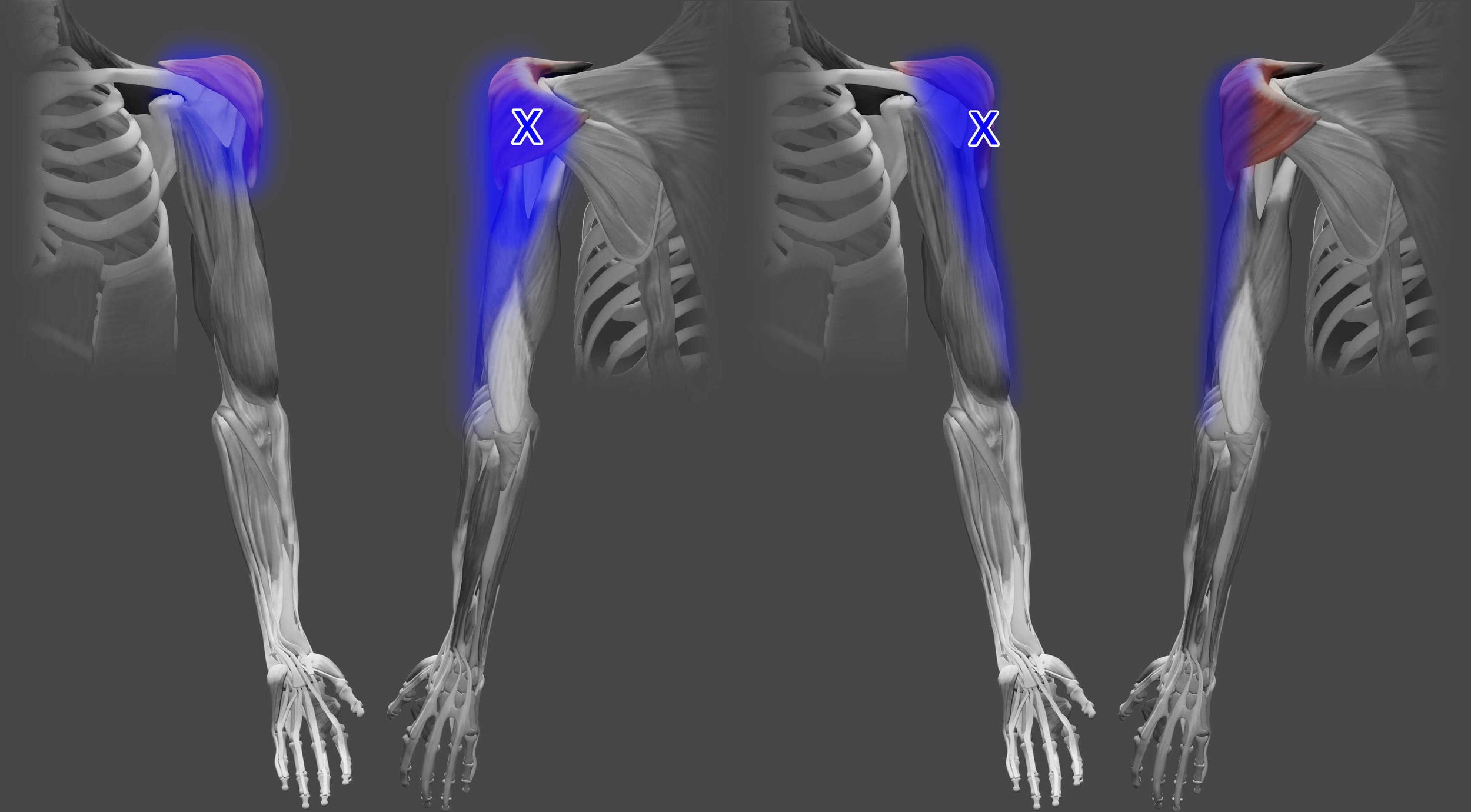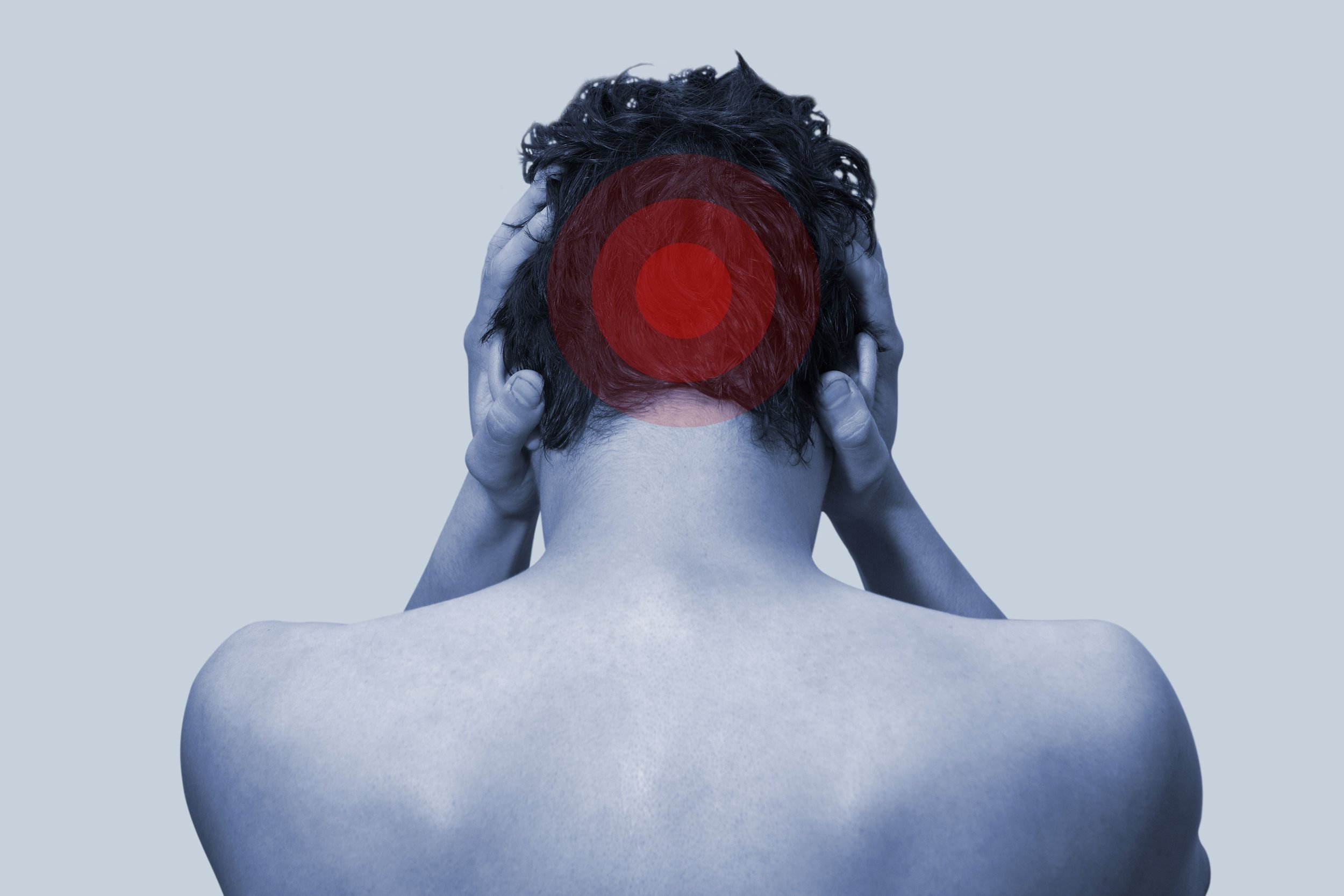Acupuncture for Teres Major Pain
A person with back of shoulder pain
Effective Treatment for Teres Major Muscle Pain
Do you often feel pain in the back of your arm or deep within your shoulder? Struggling with tasks that involve lifting or internal rotation of the arm, such as placing items on a high shelf or swinging a racquet? It's possible that you're experiencing teres major pain. In this blog post, we will explore this muscle, its trigger points, and why acupuncture and dry needling might be the solution you've been searching for.
What is the Teres Major Muscle?
The teres major muscle (not terres major) is one of the integral muscles in the upper back and shoulder area. With its origin and insertion points between the scapula (or shoulder blade) and the humerus (the bone of the upper arm), this muscle plays a pivotal role in our shoulder movements.
Often working in conjunction with the latissimus dorsi muscle, it aids in performing multiple actions in the shoulder and arm, such as adduction and internal rotation, making the arm move closer to the body and positioning the palm inwards. It also has roles in the extension of the arm and ensuring shoulder joint stability during numerous activities. It works together with the rotator cuff muscles to stabilize the humeral head to keep the shoulder in place.
It is often called the “lat’s little helper” and studies have shown that it acts as one muscle unit together with the latissimus dorsi. While the muscle can injured, a teres major strain is not as common as other shoulder muscle injuries.
Pain in this muscle can emanate from several sources - overexertion, trauma, maintaining poor postures, or even degenerative processes that come with age. When the teres major muscle isn't functioning optimally, activities requiring the internal rotation of the arm, for instance, overhead lifting or reaching, can become notably challenging.
Is the Teres Major part of the rotator cuff?
Unlike the teres minor, the teres major muscle is not one of the four rotator cuff muscles. The rotator cuff is made up of the:
Supraspinatus
Subscapularis
Common Indications for Teres Major Trigger Points
Back of Arm Pain
Back of Shoulder Pain
Dorsal Forearm Pain
Teres Major Actions
Actions of teres major are similar to the latissimus dorsi, and it is often referred to as the "lat's little helper", it has several primary functions:
Medially rotates the shoulder
Extends the shoulder
Adducts the shoulder
Stabilizes humeral head
Origin and Insertion
Teres Major Origin
Inferior angle and lower one third of the lateral border of the scapula
Teres Major Insertion
Crest of the lesser tubercle of the humerus (medial lip of the intertubercular groove)
Signs and Symptoms of Teres Major Trigger Points
Pain during muscle activation or movement
Pain when driving a heavy car without power steering
A restricted range of motion, especially overhead like when serving a tennis ball
Causes of Teres Major Pain
Overuse or trauma to a muscle is a common cause, here are some specific to this muscle:
Maneuvering a heavy steering wheel
Overhead and forward reaching, especially when lifting weighty objects like during wood chopping
Sleeping with arm medially rotated for long periods of time
Teres Major Trigger Points
Teres major trigger points
Where are Teres Major Trigger Points?
One trigger point is found in the posterior axillary fold where the latissimus dorsi muscle meets the teres major.
Another trigger point is positioned over the back surface of the lower scapula.
The third trigger point is near the point where the muscle connects to the tendon on the lateral side.
Teres Major Trigger Point Referral Pattern
Pain teres major penetrates deep into the posterior shoulder, over the long head of the triceps, and may spill over into dorsal forearm over the extensors.
Associated Trigger Points
The teres major muscle often interacts with the latissimus dorsi and the long head of the triceps brachii.
Over time, additional muscles like the posterior deltoid, teres minor, and subscapularis may develop associated trigger points. This can lead to severe pain in the shoulder area, commonly referred to as "frozen shoulder."
Once teres major trigger points are treated, pain in the interscapular area may be relieved. This pain was a result of sustained tension on the rhomboid muscles due to the abnormal tension from the teres major.
Persistent trigger points in the rhomboids may not respond to treatment until those in the teres major are addressed.
Similarly, trigger points in the pectoralis major can also impact the rhomboid muscles in the same manner.
Differential Diagnosis
Pain in the back of the shoulder is fairly common, so it's also essential to rule out other potential causes such as:
Shoulder bursitis
Supraspinatus teninitis
Thoracic outlet syndrome
Cervical radiculopathy
Synergists and Antagonists
Synergists:
Latissimus dorsi
Long head of triceps
Antagonists:
Lateral rotators such as the infraspinatus, teres minor, and the posterior deltoid.
Treatment for Teres Major Pain
Acupuncture and dry needling are effective treatments for trigger points in the Teres Major muscle. These treatments are backed by research and clinical studies. In addition to these methods, a comprehensive treatment plan may include targeted stretching and strengthening exercises, myofascial release techniques, and physical therapy to relieve tension and discomfort in the muscle. If you have pain or a teres major strain, acupuncture and dry needling can offer a safe and easy way to address your issue.
Corrective Actions
Elimination of mechanical stress on the muscle
Attention to sleeping position
Self-administration of trigger point compression
Self-stretch exercises
Teres Major and Minor
The teres major and teres minor (the teres muscles) are two distinct muscles located in the shoulder region, playing critical roles in arm and shoulder movements. The teres major, often referred to as the "lat's little helper," is primarily responsible for medially rotating, extending, and adducting the shoulder. On the other hand, the teres minor is one of the four muscles that make up the rotator cuff, primarily assisting in the external rotation of the upper arm. The nomenclature of "major" and "minor" indicates their relative sizes, with the teres major being the larger of the two. While both muscles have different functions, they work in tandem to ensure smooth and coordinated shoulder movements.
Final Thoughts
Maintaining shoulder health is essential for a broad range of daily activities. Prioritizing good habits, like ensuring ergonomic practices, maintaining proper posture, and evenly distributing weight across both shoulders, can help alleviate undue stress on the teres major muscle. Just like its counterpart, the teres minor, it's beneficial to take breaks during repetitive tasks to give the muscle a chance to relax.
Over to you
If you liked this article, please share with friends and family who may be suffering with shoulder pain.
Sources:
Travell, J. G., Simons, D. G. (1993). Myofascial pain and dysfunction: The trigger point manual. London: Lippincott Williams & Wilkins.
Biel, A., & Dorn, R. (2010). Trail guide to the body: A hands-on guide to locating muscles, bones and more. Boulder, CO: Books of Dicovery.
Janda, Vladimír. “Muscle Function Testing.” (1983).
Syros A, Rizzo MG. Anatomy, Shoulder and Upper Limb, Teres Major Muscle. [Updated 2023 Apr 17]. In: StatPearls [Internet]. Treasure Island (FL): StatPearls Publishing; 2023 Jan-. Available from: https://www.ncbi.nlm.nih.gov/books/NBK580487/
Schickendantz, M. S., Kaar, S. G., Meister, K., Lund, P., & Beverley, L. (2009). Latissimus dorsi and teres major tears in professional baseball pitchers: a case series. The American journal of sports medicine, 37(10), 2016–2020. https://doi.org/10.1177/0363546509335198
Ceballos-Laita, L., Medrano-de-la-Fuente, R., Estébanez-De-Miguel, E., Moreno-Cerviño, J., Mingo-Gómez, M. T., Hernando-Garijo, I., & Jiménez-Del-Barrio, S. (2021). Effects of Dry Needling in Teres Major Muscle in Elite Handball Athletes. A Randomised Controlled Trial. Journal of clinical medicine, 10(18), 4260. https://doi.org/10.3390/jcm10184260
Disclaimer: This web site is intended for educational and informational purposes only. Reading this website does not constitute providing medical advice or any professional services. This information should not be used for diagnosing or treating any health issue or disease. Those seeking medical advice should consult with a licensed physician. Seek the advice of a medical doctor or other qualified health professional for any medical condition. If you think you have a medical emergency, call 911 or go to the emergency room. No acupuncturist-patient relationship is created by reading this website or using the information. Morningside Acupuncture PLLC and its employees and contributors do not make any express or implied representations with respect to the information on this site or its use.




